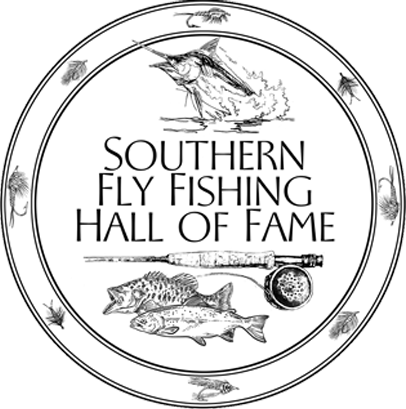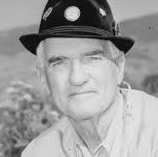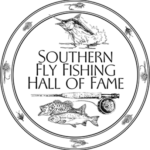Joe Brooks (1901-1972 posthumous) from Port Deposit, Maryland is often called “the world’s best and greatest fly fisherman.” As a close friend to Joe, Lefty Kreh’s foreword to Joe Brooks on Fishing in 2004, reviewed his friend’s ascension from writing a small outdoor newspaper column in Towson, Maryland, in 1945 to his role as fishing editor for Outdoor Life magazine. Lefty wrote, “Brooks opened up the world to all those who followed.” He traveled the world fly fishing in exciting new coldwater, freshwater and/or saltwater with every conceivable fly pattern for any fish species.” Brooks fly-fished with everything from midges to dry and wet flies to large saltwater streamers and huge bass bugs. Brooks fished for a variety of saltwater species, including bonefish, tarpon and his first permit with a fly in the Bahamas in the 1960s. Kreh said that Joe Brooks “put salt water on the map.” Joe’s accomplishments on salt, fresh and cold waters earned him the title of “the world’s best and greatest angler.” If Joe Brooks wrote about a new type of fly or a new fly-fishing concept in an Outdoor Life story, anglers scrambled to their vises – he gave his and other anglers innovations credibility. Joe Brooks did not sit at a vise tying hundreds of Blondes to fill fly bins. He was not an innovator as much as a good fly angler who discovered what worked for him, and then reported his findings to the angling world. Brooks liked his own big, colorful Blondes, yet his preferences did not leave out smaller wet flies, dry flies, and streamers. While not flies he created, he mentioned the classic patterns in his writings. In the Complete Book of Fly Fishing (1958) and Trout Fishing (1972), Brooks gave a list of his favorites. His fly boxes included classic wet-fly patterns like the McGinty, Alexandra (he thought this fly with its flashy silver tinsel body and peacock sword wings, also imitated minnows), Black Gnat, Ginger Quill, Cowdung, Coachman (his favorite), and Royal Coachman. Brooks did not abandon traditional patterns. The Blonde series of flies known as “Joe’s flies,” raised Joe Brooks’s stature as an innovator. Considered his signature patterns, the colorful Blondes are synonymous with Joe Brooks. In “Those Deadly Blondes,” an article in the December 1963 issue of Outdoor Life, Brook wrote, “If I had only one pattern for all big fish in both fresh and salt water, I’d choose the Blonde.” Brooks said that the big Atlantic salmon on the Aurland River in Norway “busted their spots going for the Blondes.” His intriguing stories proved the fly’s effectiveness on any water. Whether he fished his fly pattern for northern pike in Saskatchewan’s Middle Lake, false albacore near Paradise Island in the Indian Ocean, tigerfish on the Limpopo River in East Africa, tarpon in the Florida Keys, striped bass on Chesapeake Bay, or large brown trout anywhere, the Blondes performed for Brooks. Brooks’s Outdoor Life story led many to prefer the Blondes – all six (6) of them – as the patterns of choice for large fish, regardless of species. In 1939, Brooks’s new fly was conceived while fishing his striper beat on the Susquehanna River near Port Deposit, Maryland. Brooks’s Platinum Blonde remained nameless until his second trip to the Rio Grande in Argentina, accompanied by Toledo Blade outdoor editor Lou Klewer. Brooks referred to the fly, which the big Argentina brown trout hammered, as a two-winged white Bucktail. It was Klewer that suggested the name Platinum Blonde, a fly that evolved into an entire series; The Argentina Blonde, with the first wing red, second wing orange; then the mono-colored winged Yellow Honey Blonde, Pink Blonde, Black Blonde, and Strawberry Blonde. Gold tinsel is often used for the fly bodies of the Strawberry and Honey Blondes, but silver tinsel is used for the Blondes. Many writers helped popularize the Blondes including Joseph D. Bates Jr. and his book Streamer Fly Tying and Fishing (1966).
Reference: Valla, Mike. The Founding Flies: 43 American Masters, Their Patterns and Influences, Stackpole Books, Mechanicsburg, Pennsylvania, 2013.
Joe Brooks — Inducted in the Communications category as the author of numerous fly fishing publications, for trail blazing saltwater fly fishing and for the Blonde series of fly patterns.


